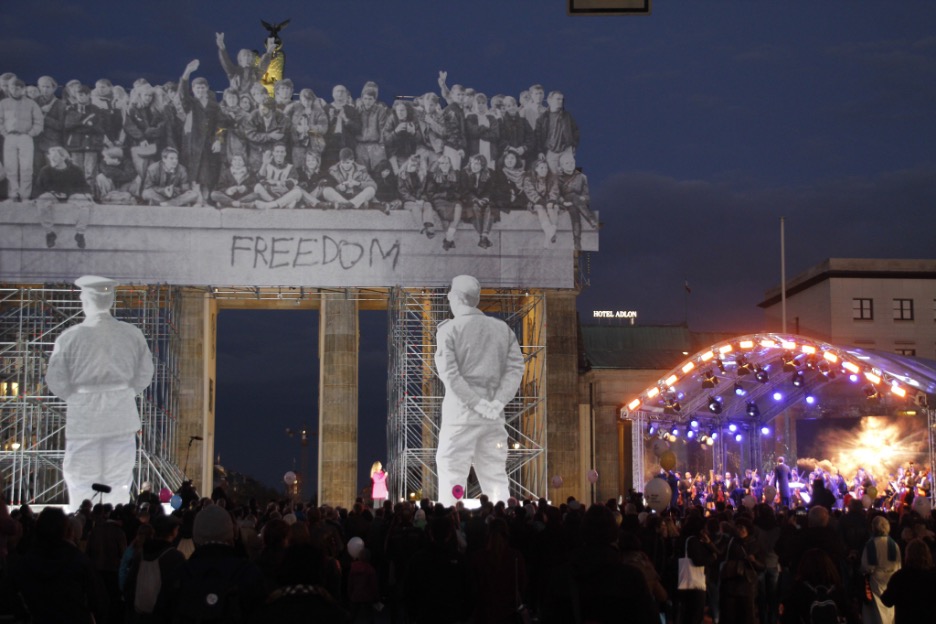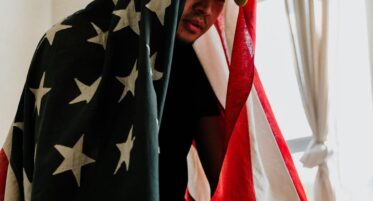
Prompt Images
On November 9, 1989, I was a junior in college, buried deep in the narrow world of literature and writing classes, reading Virginia Woolf and Iris Murdoch and thinking more about the beauty of language than world politics.
The fall of the Berlin Wall jolted me out of my literary reverie and back into real life. The Iron Curtain and the Cold War were inarguable fixtures of life, and the collapse of communism and authoritarian regimes had previously been unthinkable. The threat of nuclear war had been hanging over the world’s head for so long that we’d grown accustomed to it as just a part of regular life.
When the Wall fell, it was like the world turned upside down.
I glued myself to the TV, and watched in amazement as swarms of people attacked the Wall with pickaxes, climbed to the top, waved flags, and embraced each other with tearful joy. My own eyes welled up as I watched people celebrate and embrace their newfound freedom.
The Wall was a consummate symbol of oppression and violence. Built in 1961 to separate communist East Berlin and East Germany from democratic West Berlin and West Germany, the Antifascistscher Schutzwall (“antifascist bulwark”) was 13 feet high and 96 miles long, topped with razor wire and 302 watchtowers, with only 12 points of entry or exit that were closely guarded. It featured what became known as the “death strip,” a narrow corridor between the Wall and West Berlin where East German guards were directed to shoot anyone straying into that zone trying to escape from East to West. In all, at least 171 people were murdered while trying to escape, though 5,000 more were successful, using means such as jumping out windows over the Wall, flying over the Wall in hot air balloons, or escaping through sewers.
All of us in the West had heard horror stories about the Wall, and knew about the extreme privations that citizens of the poor and desperate Communist East Germany had to endure. So when the Wall fell, it was huge and exciting news.
1989 was a time of profound hope and optimism.
The push for personal and economic freedom was sweeping the globe—not only did the Wall come down, soon reuniting East and West Germany, but glasnost and perestroika were beginning to restructure the Soviet Union; the Velvet Revolution in Czechoslovakia eliminated communism; Romanians overthrew the authoritarian dictatorship of Nicholae Ceausescu; and Chinese citizens protested for democracy at Tiananmen Square.
As an American in 1989, I felt proud and hopeful that others around the world could gain freedoms similar to ours, and forge a newer, kinder, open and more accepting world. As so often happens, popular music began to reflect the times. The sense of joy and buoyancy was perfectly captured by Jesus Jones in their single, “Right Here, Right Now”:
Right here, right now
There is no other place I want to be
Right Here, right now
Watching the world wake up from history
Listening to that song and watching the video bring it all back so vividly. It felt like the world was indeed waking up from a brutal history of violence, including two world wars, the Holocaust, and innumerable genocides and dictatorships. Anything seemed possible, and the future seemed to stretch out brightly before us.
Now, in the 2020s, I hold onto that hope and optimism of 1989.
The irony of a communist dictatorship erecting an “antifascist bulwark” to protect its people from the “fascism” of freedom and democracy is not lost on me now, in this age of true fascism creeping back into world politics. Times change, people change, politics change, and I can only hope that the pendulum will swing back in the direction we were headed in 1989, that freedom and openness and acceptance will become closely held world values once more.



